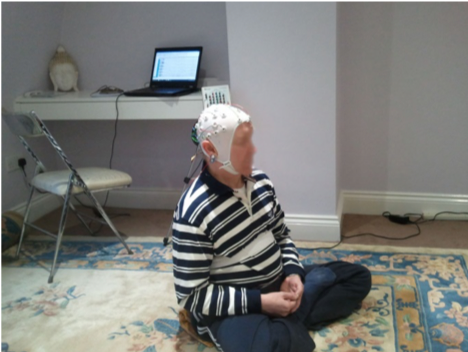
Samatha Meditation - EEG Study

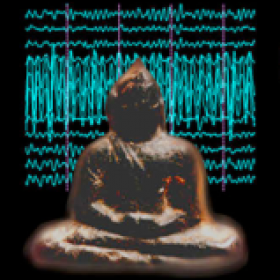
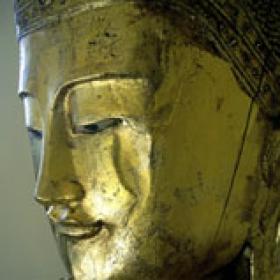
Neurodhamma
The Neuroscience of Jhāna
Over 50 years ago during the time of the first Samatha meditation classes in Cambridge, Nai Boonman took a tour of the Cavendish Laboratory Radio-Astronomy Observatory, and commented later that maybe one day we might look into “inner space” to see what happens in the brain during Samatha meditation. At that time electroencephalograph (EEG) equipment was extremely expensive, and would have filled a small room, but many years later that situation changed.
This EEG study (electrical activity across the head) of Samatha meditators began in 2010/11 as a project to satisfy personal curiosity. However, it quickly became clear that this form of meditation we practice profoundly affects brain activity, and from 2014 with the acquisition of more sophisticated EEG equipment from a supplier in St Petersburg, a more serious research project developed with far-reaching implications for neuroscience. At first the results were very difficult to interpret; there seemed no clear patterns for each of the jhānas, and different individuals appeared to use their brains in different ways to achieve similar subjective experiences.

By 2016, however, it gradually became clear that rather than trying to identify a clear signature of which jhāna a person might be experiencing, the results made far more sense for the group of meditators as a whole in terms of a progressive withdrawal from everyday sensory consciousness, represented by distinct EEG themes. The following is a summary aimed at meditators rather than neuroscientists.
vivicc’ eva kāmehi
This is the formula repeated throughout the Buddhist suttas for developing the first rūpa jhāna (this study so far deals with the four rūpa or “form” jhānas, as distinct from the arūpa or “formless” jhānas). This Pali formula is usually translated as “secluded from sense-desire”, which I have chosen to interpret as a meditator, with conscious intent, withdrawing his/her personal involvement from their default sensory consciousness (DCs in the following), which we all live within day-to-day since birth. There are three themes in meditators’ EEG that signify this withdrawal, as follows:
Spindles, attention and vitakka-vicāra
All of us in the eyes-closed resting state show alpha-band rhythms (~10 Hz frequency) particularly around the back of the head. Spindles appear as wave-packet disruptions of this rhythm (Figure 1), and are well-known in neuroscience to occur in the approach to deep sleep, and also in cases of attentional distraction (such as a driver attending to the road while distracted by conversations in the car), and to a lesser extent in anaesthesia. Meditation spindles, however, are quite different – lower frequency than the normal alpha rhythm, far more prolific, and, crucially, very different in the underlying cortical sources that cause them. (As well, of course, as the fact that meditators are fully conscious.) The cortical sources can be computed by a rather beautiful algorithm called the reverse solution, that looks at all the interactions of surface electrical scalp activity to work out what underlying brain activity, in which areas, is responsible.
Such an EEG analysis in source space, shows that meditation spindles represent disruption to two underlying cortical networks, known in neuroscience as the ventral and dorsal attention/perception streams. Piecing together different strands of neuroscience research against Buddhist understandings of jhāna, this disruption can be related to the jhāna factors vitakka and vicāra, usually translated as applied and sustained attention, respectively. The results strongly suggest that the ventral stream that encodes the content of neuronal representations of “the world” appears to correspond to the cognitive activity of vitakka; whereas the dorsal stream that establishes context and salience corresponds to the more feeling-based salience aspects of vicāra. Interestingly, in a less well-known Buddhist practice of five jhānas (rather than the more familiar four-jhāna model that this study deals with), vitakka and vicāra are worked with separately; vitakka mastered first in the first rūpa jhāna, followed by vicāra in the second.
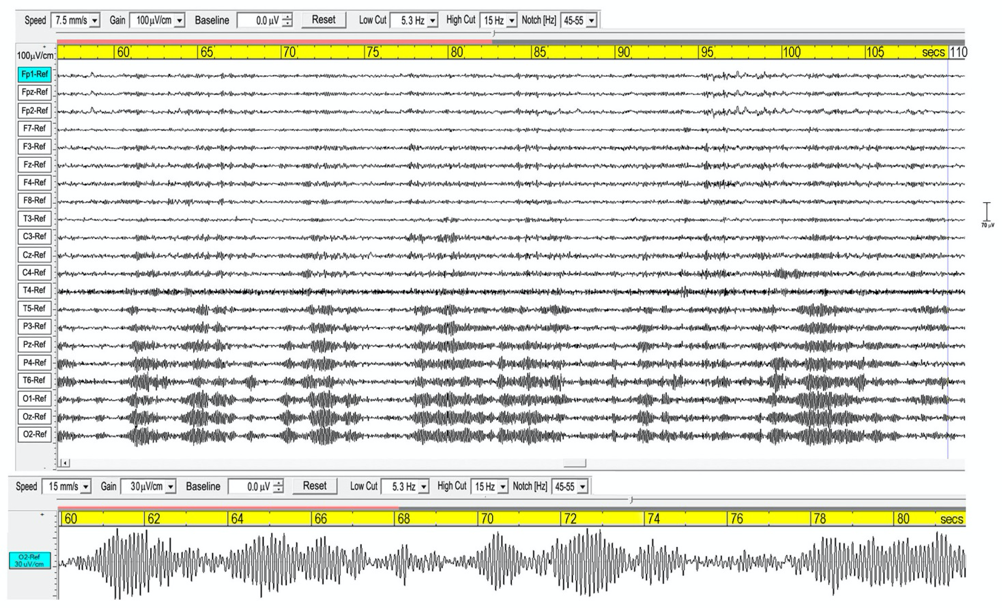
Figure 1 An example of spindles The upper traces are at the front of the head, and the bottom at the back of the head. The enlarged extract below shows the wave-packet nature of the spindles. Time in secs is in the yellow bar.
In future recordings we might test the five-jhāna model, but our results are enough to suggest that vitakka disrupts the outermost layer of our default sensory consciousness (DCs), and vicāra the next more inner layer. The fact that 27 of our 29 subjects show spindling to greater or lesser degrees also fits well with the fact that spindles represent meditators’ growing success in resisting the pull, or attachment, to their sensory consciousness in developing access concentration and the first rūpa jhāna, which all meditators have to pass through before developing the higher jhānas.
Slow waves, infraslow waves (ISWs) and pīti
Whilst the first two jhāna factors describe aspects of attention in developing the first rūpa jhāna, the next or third jhāna factor, pīti, describes a growing energisation of a more integrated body-mind system in developing the higher jhānas. This we believe is related to the second theme of slow (<1 Hz) rhythmic activity in the EEG that develops for about 21 of our 29 subjects, to varying degrees. Now slow waves are well-known to occur in deep sleep, anaesthesia and also in coma, all regarded as unconscious states, so their appearance in meditation raises intriguing questions as to the kind of consciousness that develops in this form of meditation. Eight meditators showed quite remarkable levels of intensity and rhythmicity, far higher than in sleep, or even in any of the most powerful examples seen in high-voltage delta coma. Not only are intensities far higher, but the slow waves are also much slower, ~0.125 Hz on average compared to those in deep sleep ~0.8-1.0 Hz (related to the heart rhythm). Since we also find evidence of an underlying even slower rhythm ~0.05 Hz, we refer to these slow waves as infraslow waves (ISWs), quite distinct from sleep, and likely related to more profound processes of deep metabolic brain-body integration.
The example in Figure 2 is a ~1 min excerpt from an experienced meditator showing ISWs particularly intense at central electrode locations. The inset maps correspond to the start and end points of the yellow-highlighted segment showing an alternating pattern of excitation-inhibition for the ISWs as they ebb and flow across the head. The scale, right, shows ISWs reaching peak-to-peak intensities >1000 μV. For some other subjects we have recorded intensities >2000 μV, up to 2500 μV in one case, levels which are completely unprecedented in neuroscience, apart perhaps from some extreme pathological states. Compared to typical EEG resting-state intensities ~20-30 μV, the voltage ratio ~100:1 corresponds to a power increase of almost four orders of magnitude ~10,000:1; no wonder then that meditators sometimes experience pīti as a prickling around the crown of the head, or sometimes as sweeping across the head.
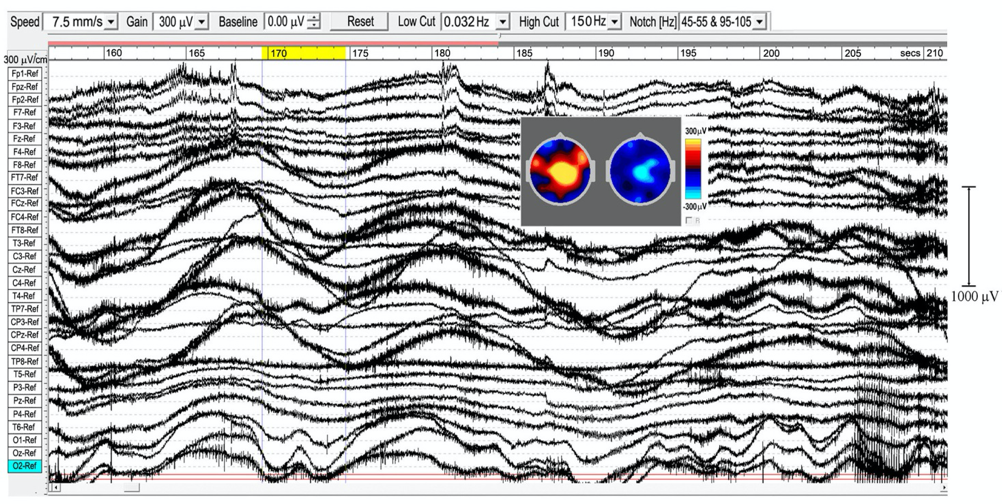
Figure 2 An example of meditation infraslow waves (ISWs)
Following analysis similar to spindles, underlying cortical sources are again quite distinct from slow waves in sleep. For those meditators who show strong and extensive ISWs the sources are summarised in 3D source-space in Figure 3, where the labels B6, B10 etc. are the conventional cortical Brodmann areas of neuroscience:
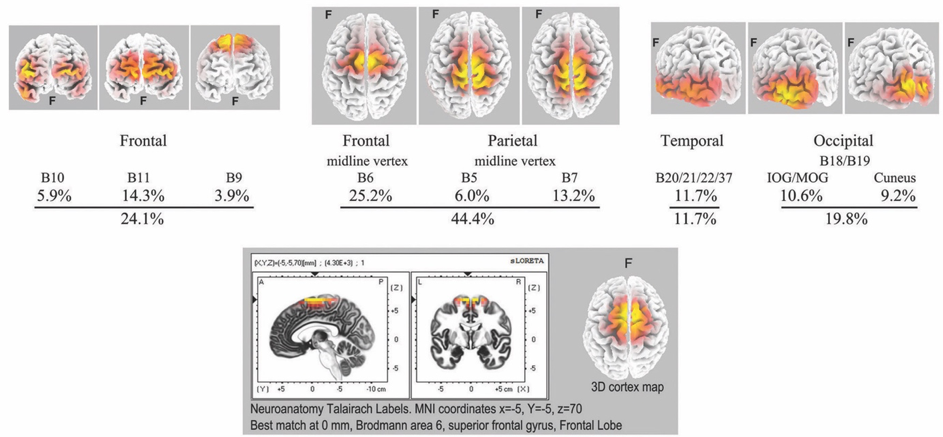
Figure 3 Cortical sources underlying meditation ISWs
For this sub-group of experienced meditators, the top row, left to right, shows three regions of interest (ROI). Left shows frontal areas that include frontal and fronto-polar Brodmann B10 and B11, extending upwards towards the vertex at B8, amounting to 24.1% of the total activity. The second ROI includes the three central plots showing strong intensity around the vertex, bridging the brain’s frontal-parietal divide, and amounting to 44.4% of total activity. While at right the third ROI includes temporal and occipital activity amounting to 11.7% and 19.8% respectively.
The lower plots show the full development of the crown or vertex source for some meditators, where all other activity typical of our default sensory consciousness has disappeared. Once again piecing together different strands of neuroscience research against Buddhist understandings of jhāna, we believe the high-energy ISWs represent the development of the jhāna factor pīti. In other words, while spindles represent the approach to and development of the first rūpa jhāna, these high energy states correspond to a meditator approaching and developing the second rūpa jhāna and from there the higher jhānas.
We also suggest that the occipital and frontal hubs represent the residual subject and object poles, respectively, of the sensory DCs, the temporal contribution the residual part of the ventral perceptual stream, while the vertex hub is a sign of the emerging second rūpa jhāna consciousness.
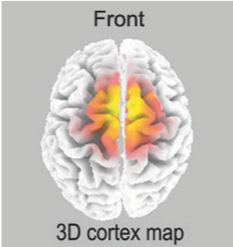
In this model, the occipital hub, integral to the dorsal and ventral perceptual streams of the DCs, carries the first-person “I/eye” pole of sensory consciousness, while the frontal hub and associated executive attention networks carries the object pole due to its role in cognitive processing, the two relating to each other through recurrent subject-object connectivity. The 3D source map of the vertex hub is then the first demonstration ever of jhāna consciousness, representing a vertical axis down through the brain stem into the body, quite different to the front-back, object-subject nature of the DCs.
Spike-waves and unstable pīti
The third theme is the occurrence of occipital spike-waves for some meditators (for example in the bottom corner of Figure 2), and Figure 4 shows expanded extracts for two meditators,
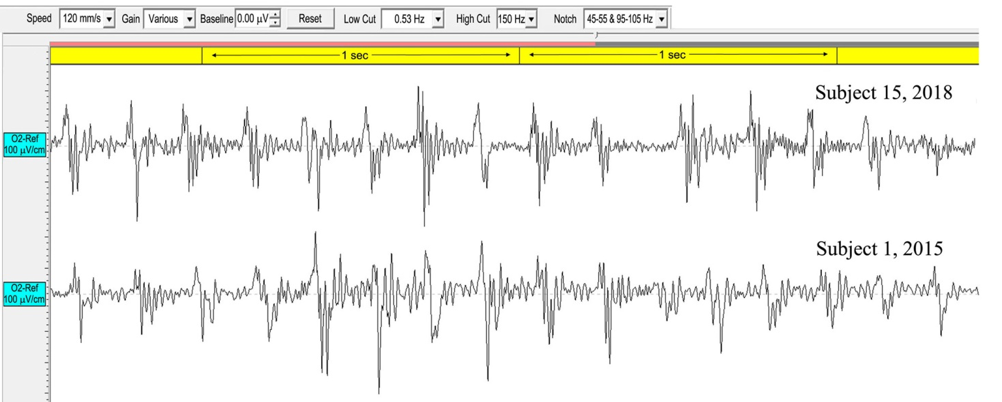
Figure 4 Meditation spike-waves
Spike-waves in neuroscience are normally associated with absence epilepsy, while in meditation they occur spontaneously for some meditators without disturbing their meditation, and are certainly not signs of conventional unconsciousness. They also occur for some meditators during the deliberate arousal of very strong pīti. We regard the occurrence of spike waves as reflecting disruption to the “I/Eye” occipital-thalamic feedback loop, and further evidence of disruption to the default subject-object nature of our DCs.
Meditation spike-waves also differ from those of absence epilepsy in that they display harmonic structure, unlike epilepsy where the frequency is fixed. We believe this is evidence that disruption of our DCs triggers the thalamus into harmonic activity in an attempt to stimulate scaled network activity similar to that of the DCs; the implication being that harmonic or fractal structure is an integral part of thalamo-cortical connectivity, and that the δ, θ, α, β frequency bands of the DCs is but one example of a scaled network, presumably optimal for sensory consciousness and minimisation of free energy.
Seizure-like activity
In the Yogāvacara (and Tibetan yoga) tradition, specific techniques allow meditators to deliberately evoke highly energised states. The rationale is to become familiar with this ability, and to then tranquilize that energy or pīti back into deeper absorption. To an observer, clonic features (bodily spasms, jerks or vibration) occur similar to epilepsy, but without discomfort and which can be evoked or left at will. Figure 5 shows an example from an experienced meditator. The first sign of growing energisation is the development of occipital spike waves, followed by a ~½sec global ictal burst, a second 3 secs later, another ~7 secs later, and then the main body of the “seizure” 15 secs later. Physically, the meditator shows shaking and vibration mainly along a vertical axis. The expanded view shows the occipital spike waves, and a related and near-sinusoidal rhythm at the right temporal site Brodmann T6, reaching remarkable peak-to-peak intensities ~3000 μV. Right, are the two strongest underlying cortical independent components (ICs) for the main yellow-highlighted event, showing intense, localised activity at right-hand occipital sites, with a spike-wave frequency 5.62 Hz, and temporal activity at the harmonic, 11.23 Hz.
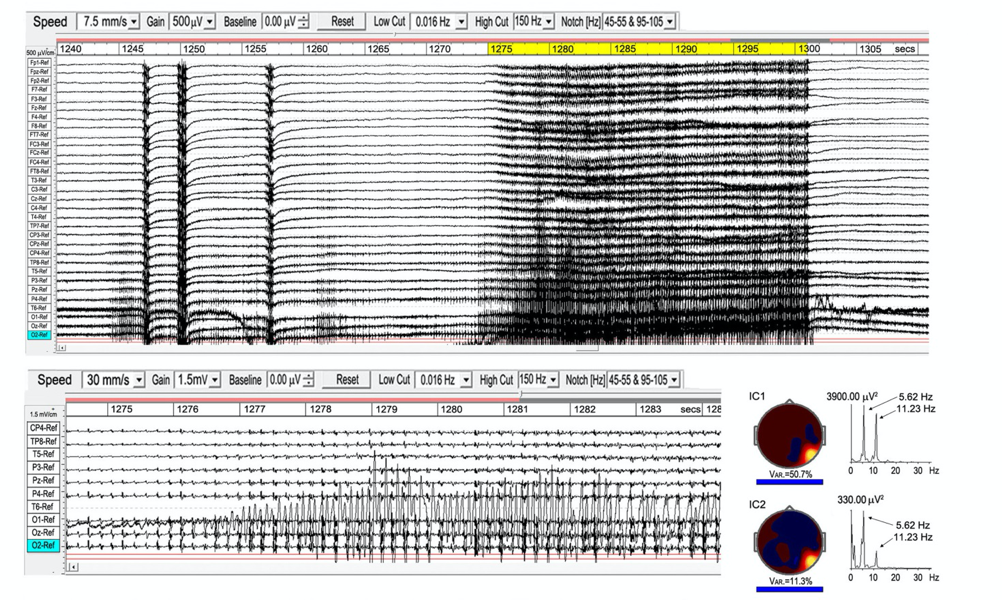
Figure 5 Deliberate arousal of a seizure-like state
The fact that such control is possible in this form of meditation is almost certainly due to highly developed attention; that is, relative mastery of the first two jhāna factors vitakka and vicāra, and raises the question as to whether some of the features of this training might be of help for epilepsy sufferers to mitigate the frequency of epileptic seizures.
These results were initially viewed with great scepticism by neuroscience reviewers, not surprising given the unprecedented intensities recorded, as well as the evidence for a previously unknown axis of consciousness. In fact a short brief report was rejected out of hand by Nature Scientific Reports reviewers in 2017. Only after a full re-analysis and lengthy revisions to address the many queries raised by reviewers, has a much longer paper describing the full range of results been published by Frontiers in Human Neuroscience, having been peer-reviewed, among others, by two leading authorities on EEG analysis and neuroscience.
For meditators
The “hindrances” in Buddhist meditation are often assumed, at least in part, to be a meditator’s problem, therefore experienced as discouraging. The neurodhamma view on the other hand sees them as reflecting disruption to the DCs - signs of slow but steadily developing success in affecting changes in brain networks. Since each of us has lived within the DCs since birth, it is a big challenge to withdraw from it and we should not be surprised at experiencing resistance to doing so.
Because of the all-pervasive nature of the DCs in our lives, for decades, this default consciousness possesses considerable momentum, rather like a massive flywheel that once set spinning is difficult to slow down. The hindrances then reflect the subjective experiences of withdrawing from ever more subtle components of the DCs, as reflected by the EEG evidence as follows:
• Vitakka represents the first stage of disruption to the DCs dorsal attention networks, and is the first challenge to the momentum of the DCs. The hindrance of sloth and torpor is our subjective experience of struggling against that momentum.
• Vicāra is the next level of challenge to the salience aspects of the DCs ventral attention networks as a meditator develops refined attention to the touch of the breath at the nose, to really “feel” the experience and to minimise doubt as to where attention is placed. Vicāra therefore relates to overcoming the second hindrance of doubt.
• Pīti reflects the emergence of energy freed once attention has been stabilised by the work of vitakka and vicāra. The next layers of the DCs that meditators are then required to deal with concern liking and disliking, or lobha and dosa. Dosa or ill-will is the dominant hindrance at this stage, and is related to the underlying fear (of loss of self) lying latent in the DCs where ill-will is the defensive coping strategy (c.f. the “fight-flight” reactions in the oldest parts of brain functioning). Passaddhi or tranquilisation of pīti overcomes fear and ill-will.
• Sukha starts with quite subtle feelings of contentment that gradually suffuse the body with satisfaction and confidence reflecting freedom from fear and ill-will, or the need to “defend”. As sukha develops, the hindrance of restlessness (and remorse for any underlying past actions linked to fear and ill-will) subsides.
• Ekaggatā is the culmination of withdrawal from the DCs, and therefore corresponds to overcoming the overall hindrance of attachment to the DCs, or sense-desire.
As a final comment, this study highlights the crucial need for meditators to be patient in allowing sufficient time to fully understand attention, vitakka and vicāra, as the threshold to developing the first rūpa jhāna. Without mastering attention, withdrawal from sensory consciousness will be incomplete, easily leading to misunderstandings (including over-estimation) of what is being experienced. Developing vitakka and vicāra is closely aligned with development of the nimitta:
• Vitakka corresponds to the basic cognitive process of attending to the touch of the breath at the nose tip, or development of the preliminary-work (parikamma) nimitta. In the Yogāvacara literature this is said to be apprehended via the “door of the eye” (similar to attending to an external kasina with the eyes open).
• Vicāra signals the meditator starting to discern the “feel” and salience of the sensation of the breath, and is a step further to apprehending the qualia of consciousness itself. This is development of the acquired sign or uggaha nimitta which is mind-made rather than fixed at the nose tip. In the Yogāvacara literature it is apprehended via the “door of the mind”.
• The work of vitakka and vicāra culminates in a stability where the breath and nimitta become in a sense inseparable, signifying the fully developed counterpart sign or patibhāga nimitta, which is now steady enough to lead the meditator deeper into jhānic absorption. In the Yogāvacara literature this is apprehended via the “door of touch”, reflecting the deep integration of body and mind in samādhi.
Abridged from, Paul Dennison (2019) “The Human Default Consciousness and its Disruption: Insights from an EEG Study of Buddhist Jhāna Meditation”, Frontiers in Human Neuroscience,
https://www.frontiersin.org/articles/10.3389/fnhum.2019.00178/full
Click here for details of residential courses for beginners and more experienced meditators.